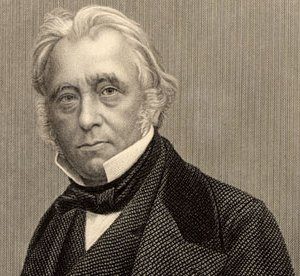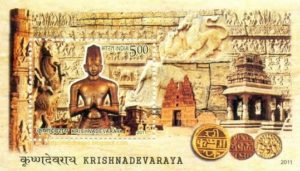An unfortunate outcome of the “modern” way of thinking–shaped by the all-are-equal assumption–is the fact that over the years, it has contributed to the reduction in the capacity of a society to produce heroes, role models etc. Today’s heroes derive from the entertainment, fashion, business and sports streams. Equally, the (primarily Marxist) widespread notion that all people–no matter what their genuine achievements are–are “subjects” to be “analysed,” has also hastened this reduction. Thus, when you have no one towering person or hero to look up to, your value system will emanate from mindless corporate and fashion-of-the-moment slogans and drivel that passes off as “corporate values” and so on.
In our own time, the never ending dissemination of all manner of information–views, perspectives, ideologies, etc–has resulted in an explosion of confusion. You no longer can get at the truth on any issue–there’s always another smart alec at the next bend armed with his or her own bundle of “logic” and “view.”
In India, it’s worse. The average urban, English-educated Indian Hindu since Independence is a stranger in his own land and has today brought to fruition Ananda Coomaraswamy’s prophetic warning that this Hindu is “a nondescript and superficial being deprived of all roots, a sort of intellectual pariah who does not belong to the East or the West, the past or the future.”
This urban Hindu also continues to take pride in repaying his or her debt to Macaulay who wrote to his father in 1836 gloating that "Our English schools are flourishing wonderfully… The effect of this education on the Hindoos is prodigious. No Hindoo, who has received an English education, ever remains sincerely attached to his religion… It is my firm belief that, if our plans of education are followed up, there will not be a single idolater among the respectable classes in Bengal thirty years hence…" A measure of the success of his putrid vision can be seen today even in those who mistakenly assume they “know” Hinduism and write ill-informed tomes on Hinduism deriding “ritual” and “idol-worship.”
Macaulay was also on the spot when he identified Bengal as the target: apart from it being one of the foundation-laying British military conquests in India, it also had a long, rich and vibrant traditions and practices of Hinduism in the intellectual, scholarly and philosophical realms, which the British could never really break. It was eventually broken by the Bengalis themselves when they reduced this hoary, holy karma bhumi to a wasteland by embracing Communism. And sure enough, the only thing that grows there today is unchecked Jihadism.
Indeed, for all the Leftist claims of breaking away from British colonialism in Independent India, they were actually responsible for fine-tuning it in a manner and on a scale even the British couldn’t envision. They sought to supplant British imperialism in India with the Soviet (and to an extent Chinese) variety, most notably in the educational realm. And met with considerable success.
Indeed, a marked characteristic of the Leftist rape of Indian history is the systematic manner in which they have succeeded in brainwashing three generations of Indians to be ashamed of taking pride in timeless, unbroken cultural and local traditions and accomplishments to the extent that the readers/students disown them. This perversion also extends to our heroes, saints, poets, philosophers and the rest.
Unsurprisingly this long heritage which we have every reason to be proud of happens to be Hindu. Perhaps in no other country has self-hatred succeeded and touched its zenith as it has in India.
Consider a sample of the kinds of things Indians take pride in: every tiny hamlet, village, boulder, hill, cave, tree, lake, and river in the remotest corner of India has what you call a sthala purana or local legend/tale/story. If you are the Leftist scholarly type, you typically dig into the authenticity, truth, historicity or otherwise of that sthala purana. But to the inhabitants of that place, it is a living truth–it provides them the heroes they need, and gives them the values and ideals that guide their lives. To that extent, these legends, heroes, and artifacts are worship-worthy. You might with the might of your scholarship, prove that it is a mere legend/tale/fiction but you can’t negate the real experience that’s wedded to and guides the lives of these inhabitants.
However, as we have seen, if your scholarship has ideological/political backing coupled with lung power, you’ll succeed not just in showing how amazing your scholarship is but, tragically, in destroying a generations-old value system that made people better people. It’s a different matter that your scholarship doesn’t provide an equivalent alternative forget providing a better replacement.
The so-called scholarship of the Leftists/Marxists is dedicated to achieving a specific goal: comprehensive destruction. Not much authentic history remains about pre-Communist Russia. And the pervasive annihilation of China’s past under Chairman Mao is too sickening to repeat mention. But for this Leftist scholarship and denial of historical facts, the massive loss of human lives in the wake of Ayodhya in 1992 wouldn’t have occurred.
Even as we speak, Hampi is another classic case. Today, it has become a haven for drug addicts, paedophiles, rampant prostitution, and wholesale land encroachment by the followers of the religion of peace. Dargahs and mosques now dot the landscape around and in the premises of Hampi, a UNESCO World Heritage site.
Equally, the government-sponsored history of the Empire that made Hampi one of the greatest and grandest cities of the world in its time is also proof of the Leftist incursion on Indian history.
In school, all that I learnt about the Vijayanagara Empire and its most famous ruler, Krishnadevaraya was just this: it was a great empire, and Krishandevaraya was a powerful king who occupied other kingdoms, planted trees, strengthened the economy, and patronized the arts. Absolutely no other detail.
Today, it’s worse. The Hampi University’s multi-volume history of Karnataka under the chief editorship of Prof. Sheik Ali dedicates a paltry few pages to Krishnadevaraya and completely downplays the role of Sage Vidyaranya. However, an entire volume is dedicated to glorifying Tipu Sultan. That this occurred under the Vice Chancellorship of the valiant Kannada champion, Prof. Chandrashekhara Kambara is pertinent to mention.
In this regard, a commendable attempt at presenting a popular history of the Vijayanagara Empire has recently been done by Ratnakar Sadasyula in his book, City of Victory: The Rise and Fall of Vijayanagara.
The underlying foundation of this coloured history of the Vijayanagar Empire can be summed up in a line: the Vijayanagara Empire was just another powerful empire founded as a “rebellion” against the Delhi Sultanate.
There are other perversions as well. Taking a leaf out of the book of aggressive Tamil linguistic chauvinism, here is what the late M M Kalburgi said in 2010:
Krishna Deva Raya did “nothing” to promote Kannada language. “I would not hesitate to call him anti-Kannadiga. He suppressed our language by patronising Telugu poets in his court.” …Plus, he encouraged Tamils too. Today if you find large pockets of Tamilians living in Bangalore, it is because of Krishna Deva Raya.
Prof. Kalburgi forgets that there was nothing like one single state named Karnataka or Andhra Pradesh or Tamil Nadu in Krishnadevarya’s time. If anything, the innumerable inscriptions and praises by contemporary poets describe Krishnadevaraya variously as Kannada Rajya Ramaa Ramana (Lord Vishnu–Ramaa’s husband–of Kannada Kingdom), Muru Rayara Ganda (The King of Three Kings) and Kannadaraya (The King of Kannada). Almost every other inscription of the time refers to the Vijayanagar Empire as Karnata Samrajya (Karnataka Empire).
Krishnadevaraya patronized several well-known Kannada poets including Chatuvittalanatha, and Gubbi Mallanna who in turn praised his generosity and his spirit of inclusiveness. Krishnadevaraya is one of the very rare kings who became the ideal hero and role model for two states simultaneously–people of both Karnataka and Andhra Pradesh till date remember him with inspiration, fondness and respect.
More importantly, he held in great esteem Swami Vyasaraya (or Vyasatirtha), one of the greatest exponents of Madhvacharya’s dvaita philosophy, and made him the raja guru (official guru of the king). It was Vyasaraya who propagated the Haridasa movement in a far-reaching manner. Vyasaraya was the guru of the celebrated Purandaradasa, the father of Carnatic classical music, and Kanakadasa, another Haridasa poet, singer, and saint. (Today, casteist politicians spearheaded by Karnataka Chief Minister Siddaramaiah have tried to appropriate Kanakadasa because he hailed from the same kuruba caste).
All these saints are still widely revered in Karnataka–their songs are still sung in classical concerts and recited as poems in daily life. And all these men flourished under Krishnadevaraya’s rule. And all of them were Kannadigas.
Besides, in Krishnadevaraya’s time, Telugu literature had reached its peak when compared to its Kannada counterpart. Is it Krishnadevaraya’s fault that the Kannada language didn’t produce dazzling poets and writers as the Telugu language did at the time? Every language throughout its history does have periods of prosperity and drought. It’s just the way it is. Now if some learned scholars of today want to blame this on Krishnadevaraya, we need to immediately check if their identity cards are coloured red.
However, being the true connoisseur of fine arts and accommodative of all religious, sects and philosophies and languages, Krishnadevarya had a number of Tamil poets in his court.
Suffice to say that Krishnadevaraya indeed remains the greatest ruler of the Vijayanagara empire. His military success was unmatched either by his predecessors or successors. None of the hostile Islamic kingdoms surrounding Vijayanagar dared raise its voice against him. Under him, the Vijayanagar empire held sway over the largest swathe of geography than under any of his predecessors or successors. He maintained law and order, delivered justice and security to his subjects, and took economic prosperity to the highest levels.
The West hankered to do trade with him and wrote glowing accounts of the economic prosperity of Vijayanagar under his rule. He instilled, promoted and patronized cultural refinement and encouraged the arts. He was well-versed in music, could play musical instruments, wrote poetry–Amuktamalyada–and other forms of literature.
Indeed, a comprehensive work exploring Krishnadevaraya’s life, times and achievements is waiting to be written in English. Contrast this with the uncountable tomes written on cruel and crazed barbarians like Muhammad bin Tughlaq.
Indeed, this seems to be the standard modus operandi of the Leftists: glorify Islamic despots and paint Hindu rulers as rebels. However, several Hindu Empires have left behind records of their long and glorious reigns, accomplishments, and so on. In such cases, simply because ignoring them is impossible, the Leftist tactic is to completely downplay them. Thus, the Guptas, Palas, Senas, Chalukyas, and the Vijayanagara Empire are reduced to mere footnotes.
It’s a fact that the state’s academic establishment is well beyond repair. Efforts at reform are hampered by bureaucratic and other obstacles. Serious work rarely gets done, and whatever little is done doesn’t reach the so-called masses.
It’s also not an exaggeration to say that most of the authentic works of history and culture of India are now emanating from outside the formal academic establishment, written by people who genuinely care about depicting the truth of our past and don’t wear ideological or political blinkers.


















































Comments